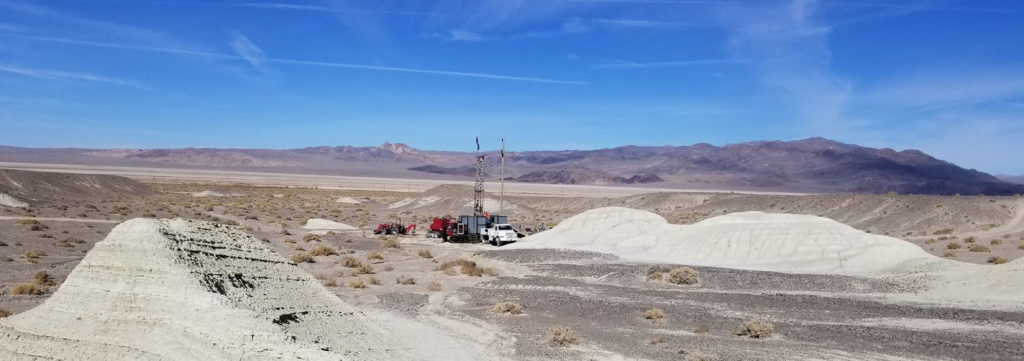
Noram Lithium (TSXV: NRM) gained 27% Thursday after a new resource estimate defined a high-grade core zone at the Zeus project in Nevada’s Clayton Valley.
The clay project, halfway between Las Vegas and Reno and within 2 km of Albemarle’s (NYSE: ALB) Silver Peak lithium brine mine, now hosts 564 million tonnes indicated grading 956 parts per million (ppm) lithium for 2.9 million tonnes of lithium carbonate equivalent (LCE). The resource is pit-constrained, modelled on a 525-ppm lithium cut-off, and incorporates a lower-grade fringe halo.
The higher-grade core hosts an indicated resource of 166 million tonnes grading 1,121 ppm lithium. The core includes 54 million tonnes of material averaging 1,496 ppm lithium, 49 million tonnes of medium-grade material at 1,108 ppm lithium and 64 million tonnes of low-grade material averaging 814 ppm lithium.
The update also includes inferred resources of 287 million tonnes at 861 ppm lithium for 1.3 million tonnes of contained LCE.
The prior January 2023 resource statement showed measured and indicated resources of 1 billion tonnes grading 941 ppm lithium for 5.17 million tonnes of LCE, with an inferred 235 million tonnes at 871 ppm lithium for 1 million tonnes LCE.
The high-grade core is expected to underpin engineering studies at the 11.3-sq.-km Zeus project going forward, Noram CEO Greg McCunn said in a statement. The news pushed the share price to C$0.14 apiece Thursday, but it is still down 78% over the past 12 months. It has a market capitalization of C$12.5 million.
“At nominal processing rates of 3.5 million tonnes per year and metallurgical recovery of 83%, a meaningful US domestic supply of high purity lithium carbonate (about 23,000 tonnes per year) could be produced in central Nevada at Zeus,” McCunn said.
The updated Zeus resource statement includes data from 10 new drill holes. This update also includes new geological work including detailed mapping, a review of historic drill holes and logs, as well as literature on similar deposits, and development of ore deposit and geological models.
A December 2021 preliminary economic assessment estimated the project’s after-tax net present value at $1.3 billion (using an 8% discount rate) and its internal rate of return at 31%. The study forecast initial capital costs of $528 million and an after-tax payback period of 3.2 years.
Once in operation, the mine would produce at a rate of about 17,000 tonnes per day, according to the PEA. Production over the life of the mine is estimated at 245.4 million tonnes, averaging 1,093 ppm lithium.
Following the resource update, Noram is working on a pre-feasibility study, but it has some practical issues to deal with first.
Noram must find a source for its process water for any future operation as no water rights are available in the Clayton Basin. The company has identified an opportunity to transfer water 10 km by pipeline from the next watershed in the Alkali Springs Valley. It has applied for an inter-basin transfer permit to state engineers.
The company’s next steps include updating the mine plan using the new data and optimizing for high grades during the PEA’s 40-year mine plan. Noram will also review and select process equipment options and continue to explore options for project water supply, including a hydrogeological study of non-basin recharge water systems.